Refine by Region
Refine by Art Form
Refine by School Level
A Sensory Experience of Place
Tell us the story of your project – What was it about? Who was involved? How did you begin?
Leanne Kyle, Teacher
We were working with Kids’ Own Publishing Partnership on a project called Virtually There. In this project the artist doesn’t actually come into the classroom. We correspond mostly via the interactive whiteboard. I was ICT coordinator and this project really appealed to me. It was different and offered a new experience for me and the children.
Initially the artist (Lisa) came to meet us at the school. It was great day because we were able to chat and have a planning session. We went on a walk around the school. We decided to use nature and the actual school environment as a beginning point. I wanted to use the school garden and create links to the eco-school ethos. We tied this all together into a project which focused on the topic of ‘senses’. This topic is very popular and suitable for P2 and 3. Later we narrowed this down further to the sense of touch with many trips outside working with the trees. It was Autumn time so we began to focus on the leaves. Lisa taught a ‘leaf dance’. From here, it just took off with a focus on nature and touch.
Lisa Cahill, Artist
My ‘Virtually There’ journey with Kids’ Own Publishing Partnership, Leanne Kyle and the P2 & 3 Class of Aughnacloy began in September 2016. At this time I was also Dance Artist in Residence at the Froebel Department of Primary and Early Childhood Education at Maynooth University. The Autumn of 2016 marked the final phase of the three year residency. I had received an Arts Council, Young People Children and Education (YPCE) Bursary Award. The focus of my investigations included the development of frames and activities that engaged the sensory body in the outdoor environment of a school site. Over those Autumnal and Winter months the creative journey with many partners unfolded.
Developing the body’s sensory attunement through engagement with the site is an important element of my practice. I was spending a lot of time outside. I was out in the garden , fields, orchards, forested areas of the University campus. My explorations involved movement, writing, art making, gathering sounds and natural materials, reading and learning more and more about the natural environment that I was in.
I wanted to bring these explorations into the Virtually There project. I really looked forward to sharing these with Leanne and the children. I wanted to notice and hear their responses through multiple and different forms of documentation. I wanted to see what emerged through our collective journey.
Leanne shared my curiousity in this discovery process as we set about investigating:
- Sensory bodies;
- Going out and spending time outside;
- Trying out different means and ways of communicating, listening and sharing as a triad of partners (teacher, artist and children).
We committed to holding an intention of listening to the needs and responses of each partner. We committed to capturing each of our responses to the tasks and activities. These responses might emerge in different forms, such as verbal, written, a gesture or movement, a photograph, a word, a drawing.
I felt my role was to invite and remind us to return to our body and the sensations and feelings we were experiencing right now in each moment.
And so our journey unfolded.
How were the ideas developed and how did the young people, artist and teacher work together?
Leanne
At the first online session, the children introduced themselves to Lisa. They wrote a little about themselves and they read this to Lisa through the interactive whiteboard. We began to work on the leaf dance and talked about the different seasons. We were in the season of Autumn. We went outside and discussed how the leaves were falling and blowing in the trees. Lisa shown us her leaf dance. That really got the children thinking about what they would like to do. They had a lot of input. We created some sensory warm up audio clips with Lisa.
https://soundcloud.com/lisadance/virtually-there-warm-up
She was great to ask the children for their ideas. The children decided that they would like to bring things in from the outside. We played with different ways of using these materials in our warm up clips. This resulted in the children bringing in leaves and things like that. This then resulted in their favourite activity; leaf tattoos. The children loved this. It was so simple, yet so effective. This all tied in well with our topics in school because we look at the different seasons. It tied in with our literacy, particularly poetry. When we arrived at the season of Spring, we wrote poems. We’d explored so much by this stage. We looked at our hands, created drawings of our hands, gone outside to find natural objects to mark make on paper. Actually, this mark making was something they really loved.
The children, in small groups, began to form their own dances. They led the learning at this point. Some of them started to think and dance about trees being chopped down. This led us to a new topic, which I had never done before in school; the topic of deforestation, looking at the Amazon rainforest and the effect of deforestation. The children really led this bit. There were lots of woodcutters chopping down trees. But also planting new trees. This was really the chidren’s own ideas, which came from Lisa’s input. At a later stage in the project, the children made campaign posters to send to the Prince’s Rainforest Trust. We are a UNICEF school and it all tied into the modules of Your Rights and You Have a Right to Have an Opinion. The children had a right to voice their opinion that deforestation is wrong. They led the learning completely.
I would say it was very collaborative project, a journey in working together.
Lisa
The intention Leanne and I brought to the development of our work together was to listen to each other and the children. In listening, we focused on attuning to the energy and responses of the children. How were they responding? At what moments did energy heighten and flow?
Indeed it was often a great challenge for me to notice and ‘feel into’ the energy of the children, the temperature of the room in response to an activity. My own sensory experience of been in the class room through the interactive whiteboard at times felt frustrating and even at times lonely. Looking at the classroom through the narrow screen of my laptop made me consider other ways of discovering and identifying the information I needed to ‘feel into’ and sense in order to learn about this room full of people. I had to ask specific questions to the children and Leanne to receive their feedback.
I will always remember Leanne’s description of the children’s response to the task of creating leaf tattoos. She described the children’s joy and laughter coupled with their attention in colouring and pressing leaves on their bodies.
Throughout the duration of the project, I continued to share elements and small samples of work from my own practice. From these sharings, Leanne and the children began to develop their own questions, tasks and creative forms of response and reflection.
I found it so exciting to see, hear and feel individual’s process, their ideas, questions and responses.
What aspects of the project made you smile? What aspects of the project made you feel challenged?
Leanne
I’ll start with a challenge. It was session 9. Everything had been going so well on our computer programme, Blackboard Collaborate. But on lesson 9, the technology would not work for us. Lisa couldn’t connect with us. I felt lost. The C2K school network in Northern Ireland is very strict. I couldn’t use facetime or skype to connect with Lisa. So we ended up communiciating via whatsapp. It was a whole new way of connecting with Lisa. We were able to communicate with Lisa using whats app voice messages. We sent photographs of what we did that day (which was a continuation of what we were doing). So when technology fails – that is a challenge.
The highlight was when Lisa came up to the school for two days in April. I will never forget that the time that she spent with them before we went out filming their dances. I will never forget that. The children will never forget that. It was amazing. We spent all this time working collaboratively online. Then she was there in person. That was a highlight for me and the kids.
Lisa
Indeed, like Leanne, memories of session 9 haven’t softened for me. Our means of communiciation didn’t work. I lost a little confidence with the technology after this point. I felt anxious in the lead up to the next sessions. When technology fails, it definitely poses a big challenge.
But, because of the realisation that we could not rely on our online connection, we began to develop less focus on me as the leader of sessions. I look back now and realise that this was a really important moment of our journey together. After session 9, I think Leanne and the children really took off and entered their full flow. Up to session 9, we spent much time getting to know each other, exploring ideas, trying things out, engaging with our senses indoors and outdoors, experiencing each others small creative forms and experiments. I know that the children had developed skills and knowledge and were full of passion for creative movement and the natural environment around them. In stepping back a little, I created more space for this dynamic partnership (teacher and children) and individuals to embrace their own creativity. When I reflect on this, I smile.
What insights from the project are worth sharing? (These may seem small, but are significant to you)
Leanne
At the start I wasn’t really sure where it was going to go. I needed to take a step back and breath. Lisa encouraged us all to concentrate on the simple things. But the simple things turned out to be very effective.
In main stream schools at the minute, it’s all about getting children in touch with their senses again. There are so many children coming into school at the moment with sensory issues. With the warm ups, we focused on the sense of touch. Before each lesson the children were so excited about working with Lisa. The warm ups helped calm the children.
The sensory issue is a big thing at the minute in main stream schools. We recognise the need to support children to return to the basics, being calm in themselves and able to regulate themselves. The warm ups for me were great. They focused on touch and feeling, touching your arm, leg and head. From a sensory perspective, this was significant for me and I thought it prepared them well for their dances.
Lisa
Something I would like to share is how we endeavoured to document the process through gathering multiple means of documentation. Leanne is an avid photographer. She created, gathered and drew our focus to this form of visual documentation.
It feels now, following completion of the project that the engagement with multiple forms of documentation was a really important layer and container for the processes and choices that emerged throughout the project. Methods included: photography, film, writing, art, movement and the gathering of materials. These forms illustrated and offered many entry points for others into the work and processes of the project.
Has anything changed as a result of the project?
Leanne
Yes. The impact of the audio warm ups and our attention to the senses made me take a step back and realise everything in mainstream teaching is done at a pace. You are going at a rate of knots to try and get everything covered because there is so much curriculum to cover. At the end of the day as society goes on, moves more into technology (and yes our project was based around technology), this project brought out the importance of just been still. Breathing and regulating yourself, mindfulness. Being aware of your space, being aware of your own body and senses, which alot of children at this age are missing. I’d say that has really made me think as a teacher.
Dance does not have to be very structured. It can made so creative and the children proved that. I was thinking where is this going to go with the boys? How are the boys going to get into this? And I not being a dancer, I was thinking, ‘gosh, where is this going to go? I think at times I worried about the end product. But I realise now it’s really about the process. The amount of work the children put into the process of it all was unbelievable. Those dances didn’t happen overnight. The children took ownership of their own process. I loved the days when Lisa worked with small groups, chatting to them about their dances, giving them feedback, hints and tips. The children loved this. It was really about the process but it’s also nice to have an amazing end product. But it really is about the process.
For me the parents really getting on board was important. It was a risk you take. Our sessions took a whole day. It was a whole day out of the normal curriculum; numeracy and literacy. For this day, you are dancing!
It was really important that the parents were on board with this. And they were. They kept involved all the time. Right from the class assembly, when we shared an interview between the children, teacher and artist. They absolutely loved it. They got to see Lisa. They had heard so much about Lisa from the chidlren. But they got to see Lisa and they were so keen to learn more about her. I think that was important, getting the parents on board and getting them involved. We created a DVD as part of our project. The DVD idea wasn’t my suggestion. It wasn’t the childrens or Lisas. It was the parents’ suggestion. Parents came to me after the class assembly and asked me for the footage. We had shown a film of an interview between Lisa and the children. We had two interviewers who asked Lisa questions. They did a super job and their parents were so proud watching the footage of them confidenctly posing questinos. This project was inclusive of all chidlren in the class and particulary appealed to those chidlren who learn best through kinaesthetic learning.
Our final DVD came from the parents request to see footage of this interview. The parents wanted to see the children’s dances and share it with others. I think this is important. It is not just a partnership between the teacher, children and the artist. It is also a partnership with the parents.
When Lisa came to the school in April, it was amazing to see the parent’s excitement. She got out of her car and they were all saying hello. She had never met them before. But they all felt that they knew her. It’s amazing how you can work with someone all year and ye’re at opposite ends of the country. When something like this comes together, it’s pretty special.
Lisa
I think what I am left with at this stage and what I would like to remember as I go forward with Leanne, the children, families and community of Aughnacloy PS, is my curiousity around makings connections and asking questions.
I have neither an answer or a method as to how to achieve these successfully. But I think we can rely on our intention to listen, trust and be curious.
Here is a note from my journal (which was written throughout the project).
What question(s) can be shared to offer permission for an experience to ‘unfold’.
I think there are different ways of thinking about this.
The possibility of making connections – learning about something and learning about myself simultaneously.
Again, what question(s) encourage openness and curiosity – giving ownership back to the individuals.
Recognise
Acknowledge
Acceptance – acceptance of where someone is right now.
A non-linear approach to learning and achievement.
What is between the teacher and the artist?
The known and the unknown. Staying at this edge. It might feel like a void or a delayed in-between stage.
Developing structures together which are composed from all the sensations of the work and materials.
A sense of intimacy and dialogue with the work – listening to it.
There is a need to explore and create frames and structures, which are away from the demands of an end product or production.
A project where we can all ask questions of each other.
“What do you know now?”
“How are you now?”
Spotlight
Artist(s):
Lisa Cahill
Lisa is a contemporary dance artist, facilitator and movement educator. From 2014 to 2016, she was Dance Artist in Residence at the Froebel Department of Primary and Early Childhood Education at Maynooth University. This residency was funded by the Arts Council. In 2016, Lisa received a bursary from the Arts Council to support her research in somatic practices in education contexts. Lisa is participating on the research project ‘Virtually There’, managed by Kids’ Own Publishing Partnership. This project is a long-term artist-in-residence programme, which connects and supports engagement between practicing artists, children and teachers in Northern Ireland through virtual communication. For more information about Lisa’s involvement in the Virtually There project, visit: www.projects.kidsown.ie
A former primary school teacher, Lisa holds an MA in Contemporary Dance Performance from the Irish World Academy of Music and Dance and a Post Graduate Diploma in Dance, both from the University of Limerick.
Lisa’s own work has been shown nationally, most recently as part of the Limerick Dance Collective, ‘Making Space: Changing Ground’.
In 2016/2017 she collaborated with Joan Davis as part of the ‘Live Archive’ performance project, which toured nationally.
Lisa has developed a large portfolio of collaborative work in a broad range of professional, educational and community contexts.
Lisa co-founded Spoken Dance, an integrated contemporary dance company. She directed a number of short dance films with this company, including 'two' which was selected for the 2015 Light Moves Festival of Screendance.
In 2015, Lisa received a certificate of attendance from ‘Origins’, a somatic movement and therapy training delivered by Joan Davis.
Teacher(s):
Leanne Kyle
Leanne teaches P2/3 at Aughnacloy Primary School. Aughnacloy is a small town on the border in Co. Tyrone. She loves to kayak, hike, travel and take photographs.
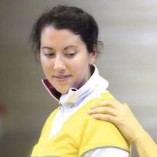
Artist(s)
Lisa Cahill
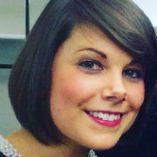
Teacher(s)
Leanne Kyle
Artforms
School Level
School/
Participant Group
Aughnacloy Primary School, Co. Tyrone
No. Participants
26
Region
Age/Class
P2 & 3
Dates
September 2016 to May 2017
Weblinks
Leading Agency
Kids’ Own Publishing Partnership
Key themes/ lines of enquiry
The sensory body – senses
Sensory experience of our place
Listening.
The intention Leanne [the teacher] and I brought to the development of our work together was to listen to each other and the children.
Lisa Cahill, Artist
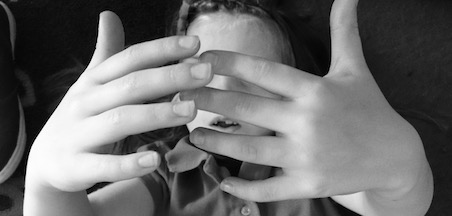
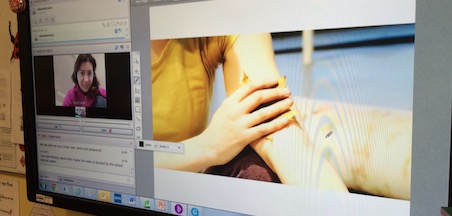


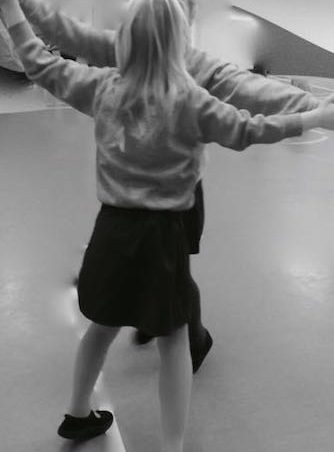

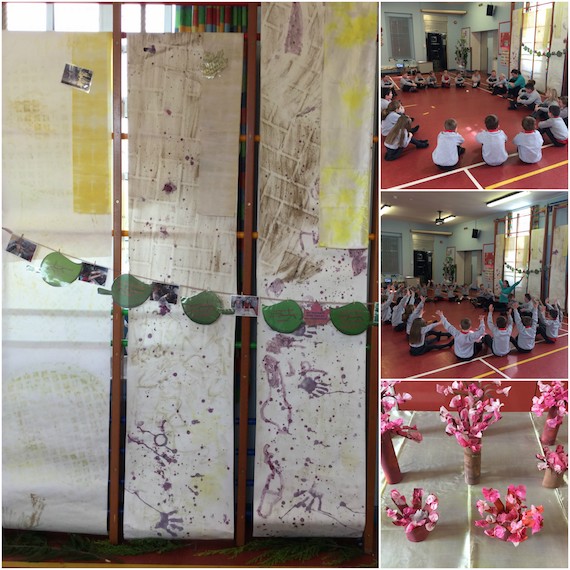
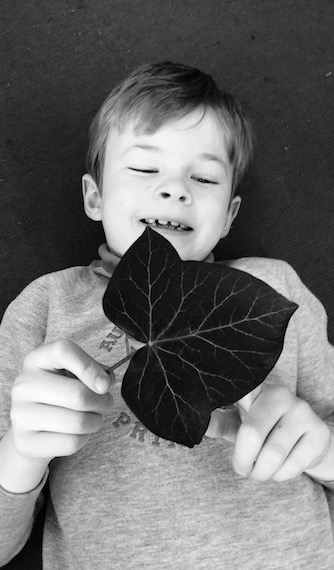
Similar Projects
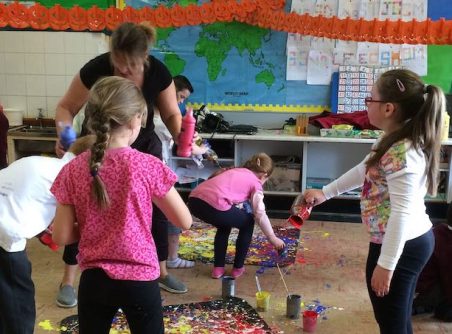
Virtually There with St Patrick’s P.S. Co Armagh
Artist Sharon Kelly and teacher Fionnuala Hughes from at St Patrick’s PS, Co. Armagh, talk about their explorations for this phase of the Virtually There Project around the idea of balance.

Virtually There
Artist Vanya Lambrecht Ward collaborates with children from Ardfert National School, Tralee, via video conferencing technology.